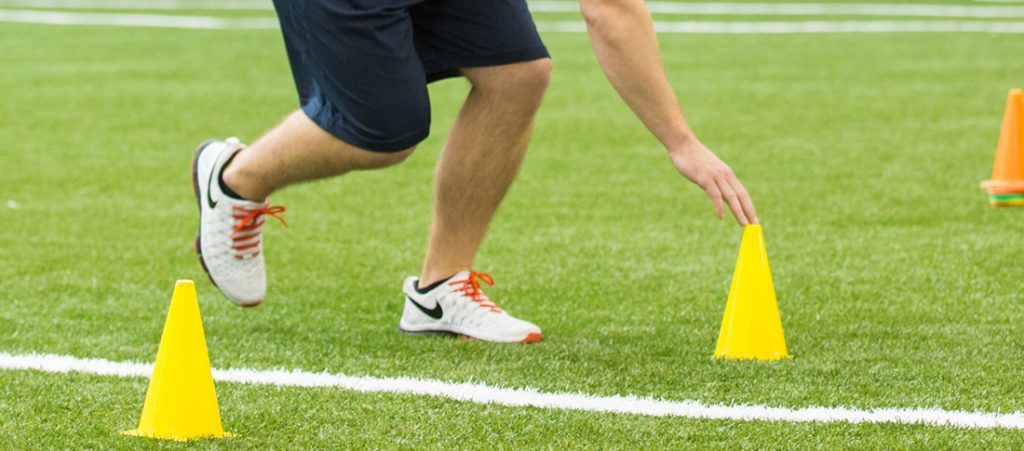Incorporating balance into youth coaching is one of those “Oh yeah, I should throw some balance activities in some time” components to athletic development.
Honestly, it should be the main staple of a youth training program.
Train for Balance
Incorporating balance into youth coaching falls under many areas like, coordination, stability, body awareness, proprioceptive awareness, etc. Balance affects the a fore mentioned and the a fore mentioned affects balance. Training for greater balance at a young age is just another brick in the huge foundation youngsters should be receiving early in life. The bigger the foundation, the greater potential for a higher peak.
Each and every day my athletes perform balance exercises. There are many different ways to incorporate balance, but each day my athletes are challenged to figure out how their body is moving.
Random Notes
Here are some random notes on what to look for when incorporating balance into youth coaching.
- When athletes use the ankle, knee, hip, and back correctly in the landing position their balance is always better. The coach’s job is to get them in that position all the time.
- The higher and cushioned the soles of their sneakers are the less balance they exhibit. Ideally, a flatter shoe or barefoot at times will help the athletes with greater feel and connectivity with ground.
- The body follows the head. When the athletes drop their heads and eyes away from the horizon, then they are off balance more.
- The object is to see a full foot contact with most of the weight toward the ball of the foot. Athletes that are way up on the ball of their foot have a lesser stable ankle and foot.
- Most athletes don’t balance as well when they jump, leap, or hop laterally, but much of the court and field sports demand tons of lateral landing and plating so I train them laterally with balance.
- Athletes don’t balance as well when they are pushed while they are in the air. Have them perform agitated jumps, leaps and hops where they get a little shove in many directions and have to land on balance.
- When athletes have an overly pronated (rolled in) foot they tend not to land well in a balance position. Work hard on trying to strength the foot and ankles of the athletes, but sometimes inserts are needed. The foot must pronate to absorb force, but being stuck in pronation in not good.
- Keep in mind, athletes need to learn to balance when they catch an object (m-ball), jump and spin and the air, or change speeds, therefore challenge them with catching while balancing, jumping, leaping, or hopping and spinning in the air. Force the athletes to move forward and stop quickly while performing some jump, leap, or hop drill and hold balance.
Main Object
The main object to remember is an athlete can eventually become better at balancing. However, if the approach and technique isn’t proper, then they are becoming good at something bad.
In order to fix the instability and mobility issues, create local and global strength (feet/ankle/hip/spine and core), improve body awareness, and then the balance can be done with proper posture. Most of the athletes I train improve their balance as they become stronger, gain mobility in the joints which allows them to be in a good postural stance, and learn to use their feet properly. They also learn to use their feet properly and integrate core throughout all movements.
Have fun choosing lots of different exercises but never forget to make each athlete do the balancing exercise correctly.
Check out Low Box Training for Athletes for ideas of incorporating balance into youth coaching. In this video, you will see dynamic balancing exercises in action.

